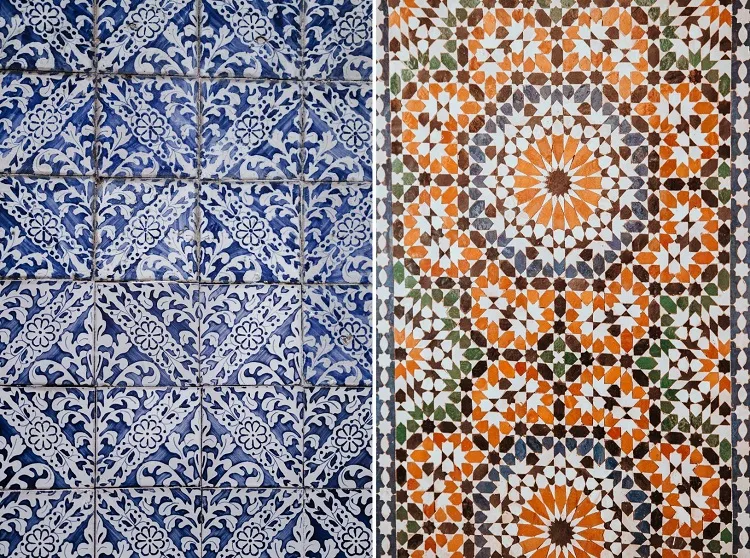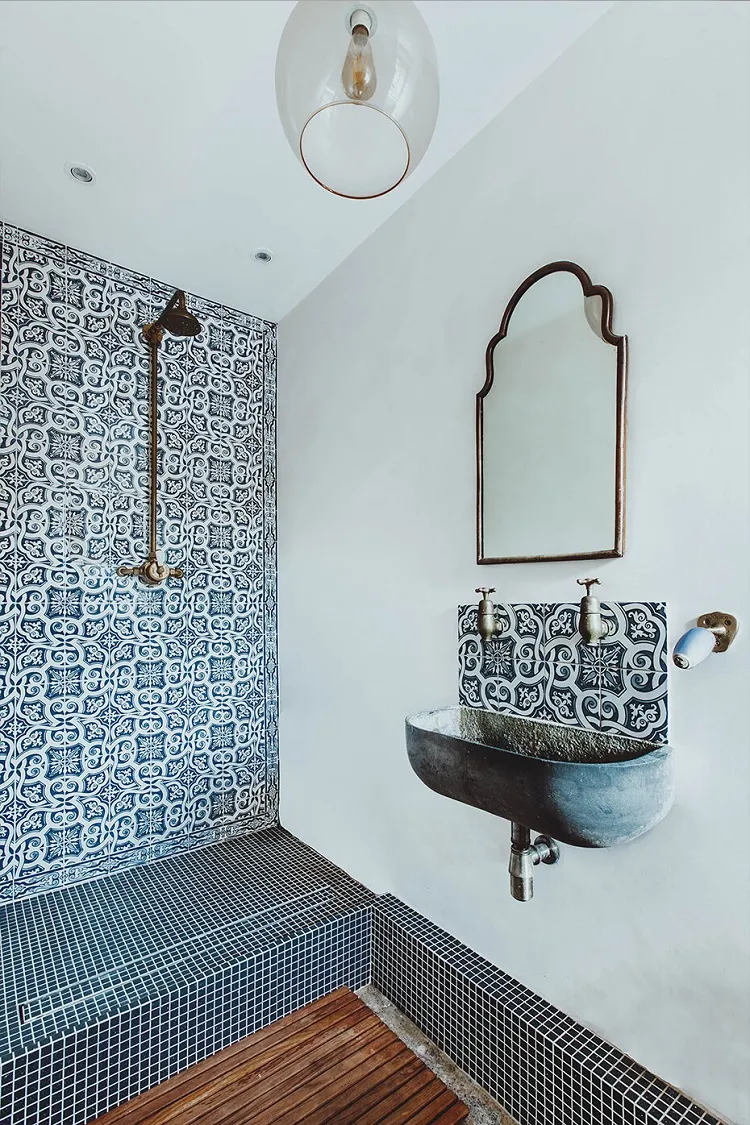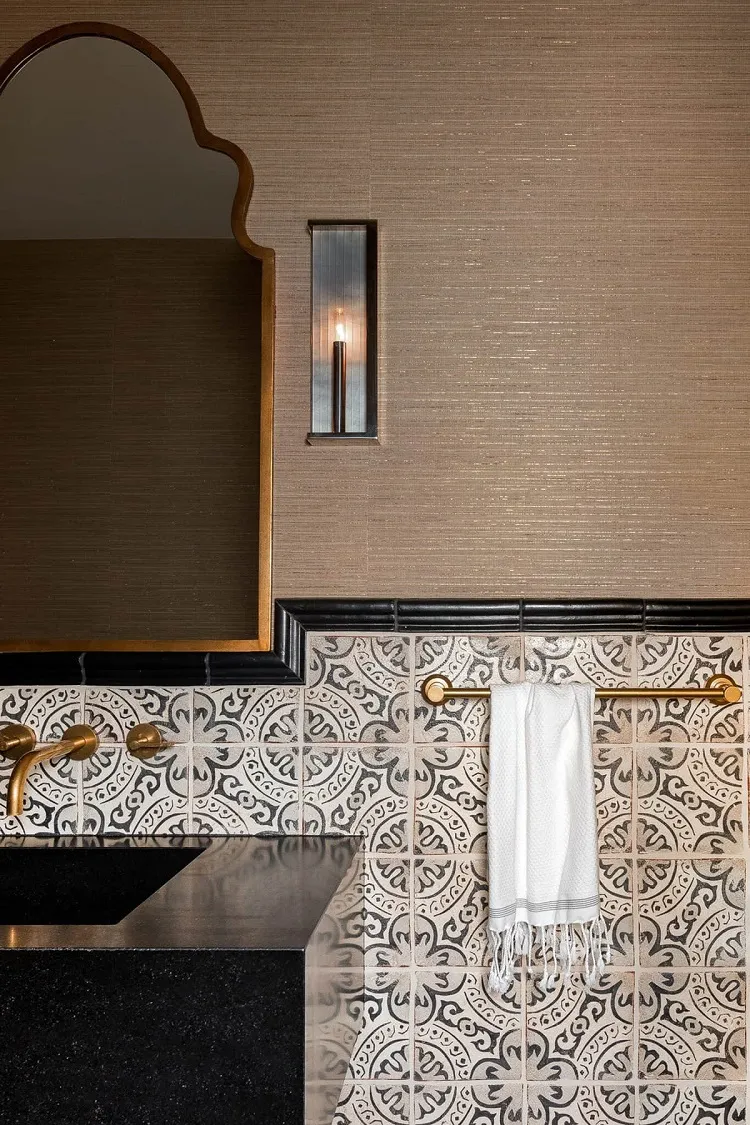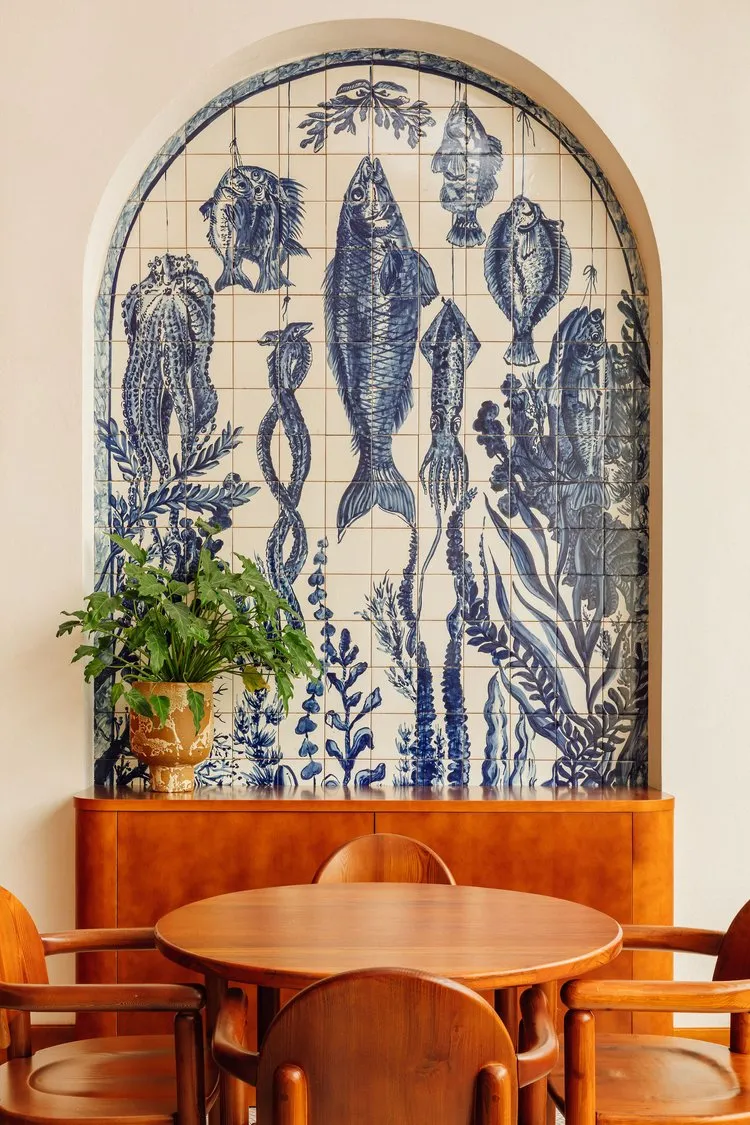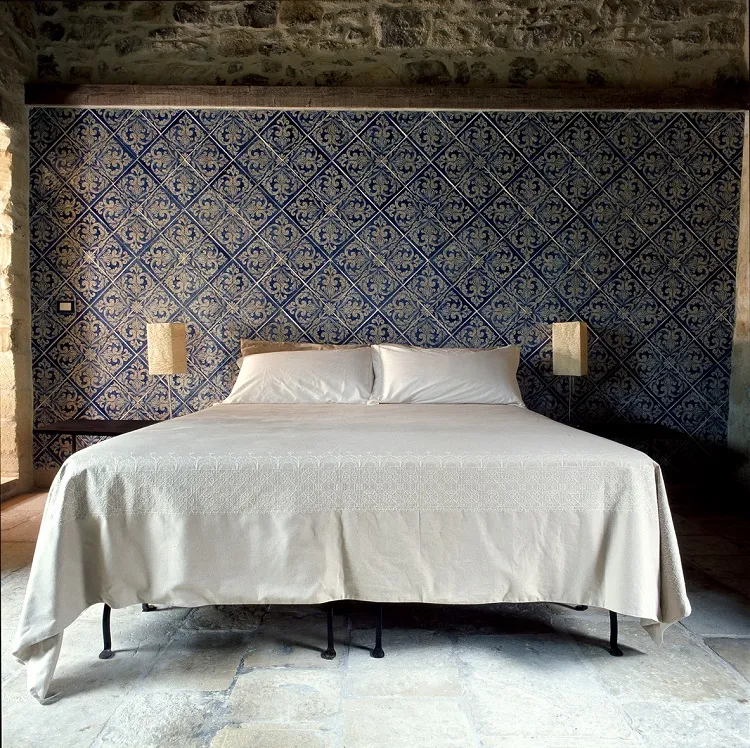If you’ve ever traveled to the southwestern part of Europe, you’ve probably noticed the predominant display of intricately painted decorative tiles. In the past they were mainly used on the exterior facade of churches and palaces, however, in present days it’s not uncommon to see them incorporated into the interior design of houses, cafés, restaurants, and even subway stations. If you’re traveling through the Iberian Peninsula (Portugal and Spain), you’ll hear people call these tiles azulejos. As you move more to the south toward North Africa, you’ll notice very similar tiling in Morocco called zellige. Let’s look at the difference between the two styles and see how you can integrate them into your interior decisions.
What’s the Difference Between Azulejo and Zellige Tiles?
Heavily influenced by the Moors and traditional Islamic, Roman, and Byzantine patterns, Portugal, Spain, and Morocco developed their own reimagination of these tiles that have been of tremendous interest not only to historians but to designers and architects, as well. The center of azulejo tiles is the Iberian Peninsula and their name is derived from the Arabic word azzelij, which means “small polished stone”. Morocco is the home of the zellige tiles and their name is derived from the verb zalaja, which means “to slide” which is also indicative of the smooth surface of the glazed tiles. The main difference between the two is that zellige tiles are covered with elaborate geometric motifs, while azulejo tiles are painted with patterns, scenes of life, and living things.
Handcrafted Azulejo Tiles – One of the Biggest Trends of 2023
The interior trends of 2023 are all about bold self-expression and making a statement. Originally painted in blue, nowadays, Azulejo tiles have many modern redesigns which makes them incredibly versatile and vastly sought out by interior designers because of their alluring appearance, especially for countries outside Europe and North Africa. It’s interesting to see that because of their intricate patterns, the Portuguese tiles get incorporated not only into the interior of all kinds of spaces but into furniture, too. Here are a few interesting ways to bring this historical relic into a contemporary design.
Blue Azulejo Tiles Bathroom
These hand-painted Portuguese tiles in combination with brass and cast iron bathroom fixtures immediately bring a European character to your space. The stone rough finish stone sink is another beautiful addition that gives the bathroom a more lived-in feel. When applied to large surfaces, the ornamental azulejo tiles can be a bit overwhelming, so make sure that you find a fine balance when decorating your space by leaving some clear walls or adding contrasting textures to soften the patterns. Wood and different kinds of stone are great options for this case.
Half-Tiled Modern Powder Room
This modern bathroom was redesigned in a 30s Spanish style with a black marble sink in combination with brass bathroom fixtures for an elegant and timeless appearance that’s going to last for generations. We can see a beautiful incorporation of azulejo tiles on the bottom half of the wall, and right above them, there is a brown grasscloth wallpaper. The two wall elements are separated by rectangular black tiles which create a stunning frame in coherence with the color of the sink.
Large Colorful Azulejos Tiles Flooring
This contemporary design of the classic ornamental azulejo tiles in distinctive colors that are consistent within the whole interior of the space helps create a unified, refined appearance. Because of the significantly large size of the tiles, even though the design is quite detailed, their arrangement and interplay of pastel colors with vibrant blue shades in drawings add a playful atmosphere to the space without being overbearing.
Accent Wall in an Arch Dining Nook
The Portuguese are known for using art as a storytelling medium, and the azulejo tiles were one of the many canvases they used to showcase historical events and other memorable happenings. In this design, we can see how the artist derived influence from the Portuguese tiling tradition, but instead gave it a more modern twist with marine life illustrations. This is a great way to create an accent wall in your dining space. If you want to put even more emphasis on the tiling piece you can build an arch nook and incorporate the tiles into it.
Portuguese Tiles Bedroom Backsplash
Accent walls are a great way to jazz up the atmosphere in any space, especially the bedroom. Add a Mediterranean flair to your home sanctuary by creating a backsplash with hand-painted azulejos tiles. Highlight the authentic feel by incorporating other natural materials and textures within the space – natural cork, stone pitch flooring, simple furniture with clean lines, wooden details, and natural fabrics like cotton and linen. This is an awe-inspiring reflection of old and new, a safe haven that encapsulates the beauty of the past while still allowing room for the present.

